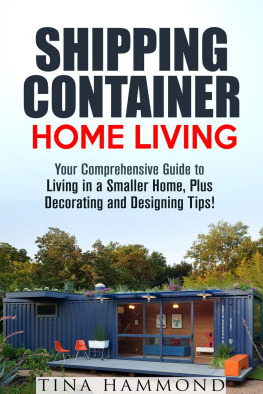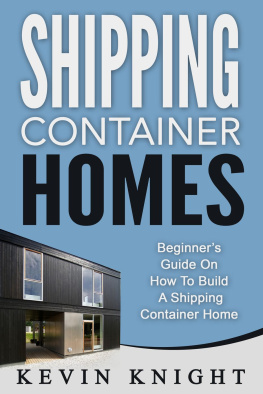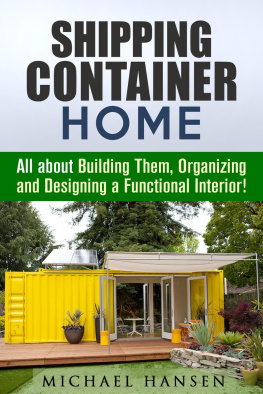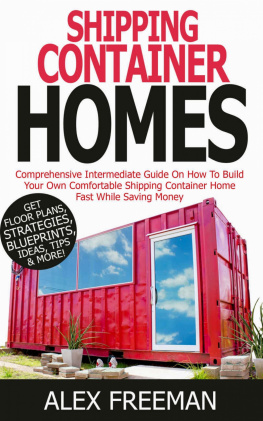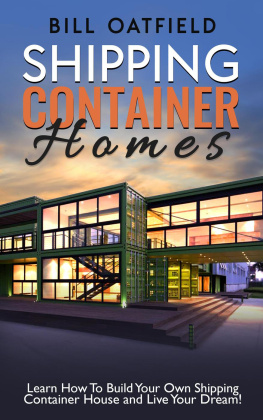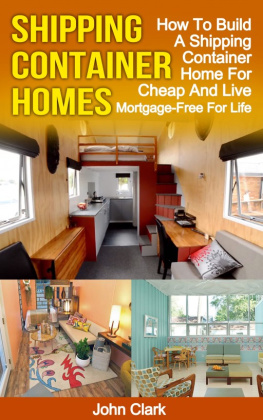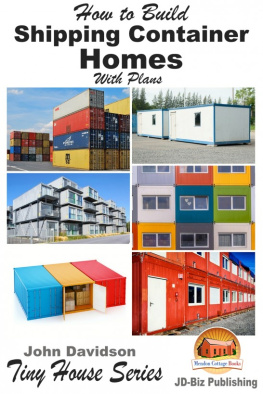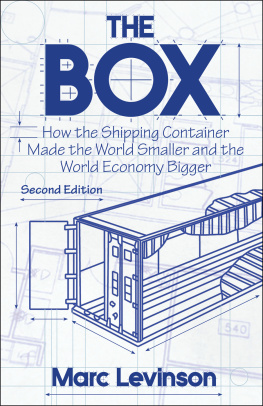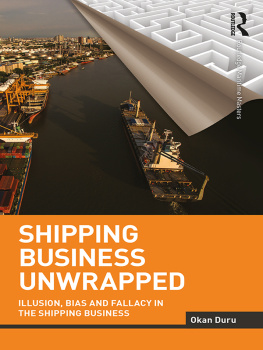Shipping Container Homes
Steps And Strategies To Building Or Buying Your Own Dream Shipping Container Home
Terrence Garnett
Table Of Contents
T hank you for taking the time to download this book, Shipping Container Homes.
This book covers the topic of Shipping Container Homes, and will teach you how you can own one yourself.
At the completion of this book, you will have a good understanding of the container home movement and lifestyle and be able to make the right decisions in building or buying your very own container home.
This book is full of fun facts and important tips for those who are considering owning a container home To be specific, you will get to know the container house movement and the origins to this way of life. In addition, you will be given the pros and cons of this lifestyle, so you can set realistic expectations. You will also get an overview in ensuring you tick off all the necessary steps in the planning stage to ensure a smooth build.
If you do decide to build your own, an entire chapter is dedicated to helping you get an overview of what you will need. Following this is information providing ideas and insights to the exterior treatment options to your container..
It does not end there, though. You will also gain plenty of fun and practical space-saving hacks and furniture ideas to make your tiny house comfortable, stylish and convenient to use. The book then ends with a chapter, which answers the most Frequently Asked Questions regarding container living.
Living in a shipping container home is ideal for those who wish to become financially free, environment-friendly, and self-supporting. You can begin taking the steps to become a part of the Container Home Movement right now. All you have to do is start with Chapter 1!
Once again, thanks for downloading this book, I hope you find it to be helpful!
Chapter 1 - How We Use Shipping Containers
T heyre pretty much impossible to miss, no matter where you happen to be in the world. All you need to do is get onto a major road or a highway, and youll soon find yourself traveling with trailer trucks. Just make sure youre in the right lane because these trucks, which haul shipping containers or intermodal containers from one place to another, are almost always as massive as the actual containers that theyre carrying.
Where are all those shipping containers going? Again, theyre pretty much going all over the world. Its true that youll find large numbers of shipping containers at your local port, particularly if that port is designed and outfitted to handle hundreds upon hundreds of shipping containers per hour. But because of the standardized sizes and capacities of these shipping containers, theyre also easy to find at all the places where cargo can get transferred from one mode of transport to another.
And, yes, only a limited number of shipping containers get loaded into airplanes. So, why are they still present everywhere at the airport? Any cargo that does get shipped by air can be transferred upon landing into shipping containers for ease of overland hauling.
A Product of Necessity
The shipping container is, in and of itself, a revolutionary idea. Before those massive steel boxes became commonplace, it was a tedious and labor-intensive task indeed to load cargo onto ships, trains, trucks, and everything else. After all, teams of people were needed to sort and stack all the different goods. After sorting, the items to be shipped would be packed into various crates, barrels, and sacks, or whatever else could be found that was safe to use as a container on board. More people were needed to laboriously carry, drag, or otherwise load the containers onto the ships and these same people would need to make sure that the containers were loaded properly.
Difficult as that process was, it was used for many centuries. With the increasing popularity and general use of railroads, however, transport companies began to see the necessity of creating more standardized containers that would make it easier to carry cargo and goods by rail. In the United Kingdom, these standardized containers initially took the form of relatively simple boxes made of wood. Other companies in Europe began to use containers that consisted of wooden sides built onto a steel frame.
With time, these same transport companies began to see the value of standardizing the containers that were used in ferrying goods by land and by air. Some types of containers which were invented at the time, and which are still in use today, have wheels to make them easier to move around.
The modern concept of relying on standardized, durable containers that could be stacked efficiently and safely started to pick up steam after World War II, when the first all-steel shipping containers began to be deployed. Gradually, these steel containers were made more durable, more standardized, more secure, and more modular. With the entry of Malcom McLean into the worldwide shipping business, the modern intermodal container became the standard: the ubiquitous steel box with doors on one end and a plywood floor inside.
Some experts have gone so far as to claim that without the modern intermodal container, the very ideas of globalization and the global economy would not have existed.
There are different types of shipping containers, but a huge majority of the units deployed worldwide are of the dry freight type. These containers, with their doors and their plywood floors, can be 20 or 40 feet long, and they are usually 8 feet high and 8 feet wide. Hi-cube units are about a foot taller than the regular dry freight shipping container. Into these different types of units go different types of dry goods, which are commonly packed into boxes. On the other hand, perishable items can be loaded into refrigerated shipping containers, which are slightly smaller in terms of available cargo space because of the refrigerating equipment built into one end of the container. Even tanks for the transport of gases and liquids have been built to essentially the same dimensions as an intermodal container.
When it comes time to load these filled intermodal containers onto a waiting ship, simple but very effective locks and castings make it easier to move these containers around, and also secure them safely to the decks and to each other. Stacking such containers helps maximize deck space and the amount of cargo that can be moved at a given time.
Among the advantages of hauling freight via shipping container is the very simple fact that these huge steel boxes can be locked whilst closed. Yes, it means that the goods being ferried around stay inside the container but it also means that those same goods can be more easily protected from theft. In the old days, it was nearly a given that some of the goods loaded onto a ship would never even reach their intended destinations, thanks to rampant theft and pilfering. Now, steel shipping containers may also be equipped with tracking devices just in case the ship capsizes or the truck or train is diverted to some other location. Motion sensors are sometimes used as well, mainly to detect and deter attempts at breaking in.
Next page



